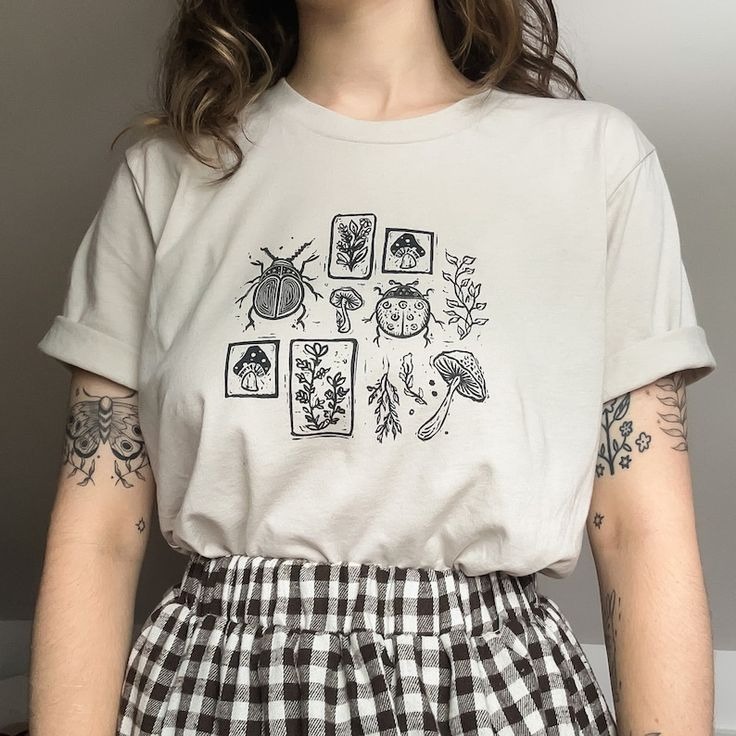From the shores of early twentieth-century naval docks to the bustling avenues of contemporary metropolises, the T-shirt has threaded itself into the very fabric of human experience. What began as a simple solution to itchy military uniforms evolved into a mirror reflecting our collective hopes, rebellions, triumphs, and contradictions. Slip one on, and you wear not just cotton against your skin—but a living tapestry woven from generations of innovation, cultural upheaval, and quiet personal stories.
In its infancy, the T-shirt was an unassuming underlayer, concealed beneath heavy woolen jackets and crisp dress shirts. Sailors aboard U.S. Navy vessels discovered that this collarless, short-sleeved cotton garment offered a welcome reprieve from stifling uniforms—a whisper of cool comfort in humid engine rooms and sun-blasted decks. Returning veterans carried that relief home, discarding their regulation shirts and unknowingly setting in motion a shift that would transform wardrobes worldwide.
Hollywood’s lens soon found the T-shirt irresistible. When screen icons stepped before the camera clad only in a snug white tee, their every flex and line of muscle spoke of raw honesty and unvarnished confidence. Audiences, captivated by this new minimalism, embraced the T-shirt as more than mere undergarment: it became an emblem of unfiltered presence and youthful audacity, a silent declaration that less could indeed be more.
As the decades rolled on, the T-shirt’s blank expanse beckoned artists, activists, and everyday dreamers. With the advent of hand-pulled screen-printing, slogans and graphics bloomed across cotton fronts like wildflowers in spring. They carried messages of peace and protest, of band loyalties and brand allegiances, each design an urgent pulse in the heartbeat of its era. In dorm rooms and garages, aficionados hand-painted their convictions—peace signs splashed in vibrant hues, block-printed anarchist crests, psychedelic swirls that seemed to dance with the rhythms of hope and dissent.
But behind the flourish of pigment lay a quieter revolution in materials. Textile engineers coaxed new virtues from age-old fibers. Cotton blends took shape with polyester giving wrinkle resistance, rayon lending a silken drape, and bamboo fibers promising sustainability. Merino wool crept into athletic lines, prized for its temperature-regulating magic, while spandex wove flexibility into every stretch. Knit patterns—from the lightest single-jersey to the sturdy piqué—created subtleties in touch and drape, ensuring that each T-shirt carried its own whispered character.
The quest for perfect fit added another layer to the T-shirt’s evolution. No longer was the garment cast in a one-size-fits-all mold. Tailors studied the arc of shoulders and the slope of torsos, crafting patterns that moved with the body’s natural rhythms. Today, 3D scanning and AI-driven tailoring are pushing this art even further, promising bespoke T-shirts shaped to the contours of each wearer, knit in real time by digital looms that eliminate wasted fabric and unfit returns.
Yet for all its technological triumphs, the T-shirt remains rooted in human stories. It has clothed generations of activists marching for civil rights, climate justice, and gender equality, each cotton banner a rallying cry for a more equitable world. It has been the unofficial uniform of subcultures from punk to skate to hip-hop, each logo and graphic a defining emblem of shared identity. It has borne the marks of birthdays, weddings, family reunions, and charity runs—stained with memories of sweat and laughter, of fleeting moments immortalized in fabric.
In the modern age, questions of ethics and ecology loom large over every stitch. The water-thirsty fields of conventional cotton, the plastic roots of polyester, the hidden labor behind factory seams—all challenge us to reconsider the true cost of our beloved tees. In response, pioneers in regenerative agriculture are nurturing soils that restore rather than deplete; innovators are spinning post-consumer plastics into new yarns; visionaries are experimenting with bio-derived polymers that promise garments that return harmlessly to earth when their journey ends.
And still, the T-shirt looks ahead. Smart textiles are no longer sci-fi dreams but tangible realities: shirts woven with conductive threads that monitor breathing and heartbeat, fabrics treated with nanocoatings that repel stains and neutralize odors, phase-change fibers that cradle you in warmth or cool you in heat without a second thought. On-demand digital knitting, once the realm of prototype labs, edges closer to everyday use, offering zero-waste production and garments tailored to the individual’s body—and even their mood.
Yet among these dazzling advances, the T-shirt’s deepest power endures in its simplicity. In its soft embrace, we find comfort; in its blank canvas, we find voice; in its communal ubiquity, we find connection. It is the gentle dialogue between wearer and world, a conversation conducted quietly in cotton, ink, and intent. When you pull on your favorite T-shirt tomorrow, you join a lineage that stretches from rough-hewn docks to couture runways, from student protests to Silicon Valley boardrooms—woven through time by the enduring human impulse to clothe body and soul with meaning

